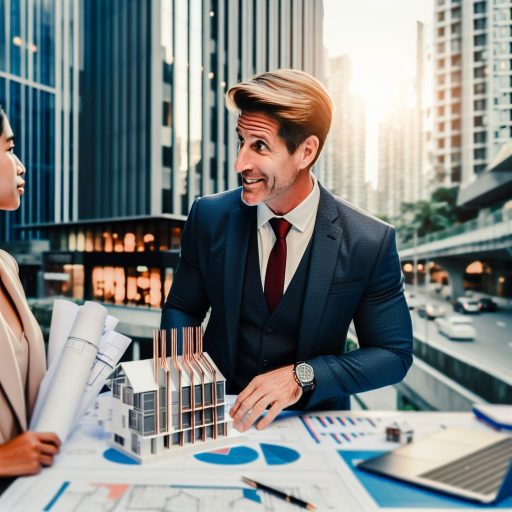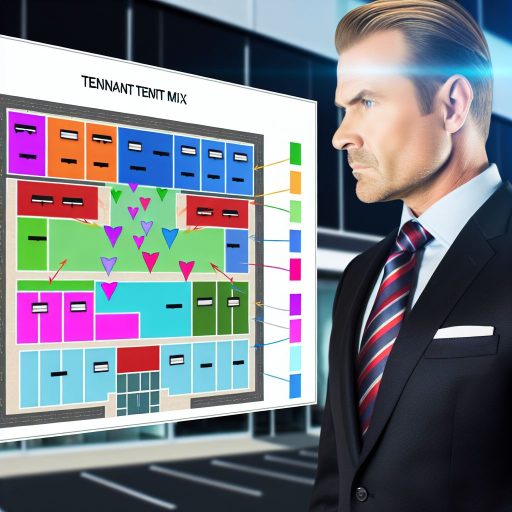Introduction to Mixed Use Properties
Definition
Mixed use properties combine residential, commercial, and recreational spaces in one location.
These developments encourage vibrant community interactions.
They provide essential services and amenities within walking distance.
Overview
Mixed use properties have gained popularity in urban planning across the U.S.
They aim to create walkable neighborhoods and reduce urban sprawl.
Additionally, these properties enhance local economies and promote sustainability.
Often, city planners incorporate mixed use designs into revitalization efforts.
Benefits
- Fosters community engagement and social interaction.
- Reduces dependence on automobiles for daily activities.
- Supports local businesses and job growth.
- Increases property values in surrounding areas.
These advantages make mixed use properties attractive for developers and residents alike.
Historical Context: The Evolution of Mixed Use Developments in the U.S.
Early Development Concepts
Mixed use developments date back to early American towns.
These towns combined residential, commercial, and public spaces.
Consequently, community interaction thrived in these environments.
20th Century Shifts
The 20th century saw a shift towards suburbanization.
Many Americans moved away from city centers.
This led to the separation of residential and commercial areas.
However, challenges arose as communities grew more fragmented.
Revitalization Efforts in the 1990s
In the 1990s, urban areas began to revitalize.
City planners embraced mixed use developments once again.
They recognized the need for vibrant, walkable neighborhoods.
This era focused on creating spaces that fostered community.
Modern Trends and Innovations
Today, mixed use developments adapt to current needs.
Developers now incorporate sustainability and technology.
For instance, urban gardens and co-working spaces are popular.
Mixed use structures increasingly feature green roofs and energy efficiency.
Current Challenges and Considerations
Despite progress, challenges in mixed use development remain.
Balancing affordability with desirable locations is crucial.
Local governments often play key roles in these projects.
They provide guidelines to ensure sustainable urban growth.
Key Design Trends in Mixed Use Properties
Aesthetic Elements
Aesthetic considerations dominate the design of mixed use properties.
Architects focus on creating visually appealing structures.
Natural materials enhance the overall beauty of buildings.
Large windows increase natural light in commercial and residential spaces.
Green roofs and living walls promote sustainability and aesthetics.
Outdoor public spaces invite community interaction and engagement.
Functional Spaces
Functional design remains crucial in mixed use properties.
Open floor plans allow flexibility and adaptability in usage.
Dedicated areas for retail and residential amplify user experience.
Community gathering spots foster connections among residents.
Integration of technology enhances convenience and accessibility.
Parking solutions cater to the needs of both residents and visitors.
Urban Integration
Urban integration plays a key role in property design.
Effective zoning regulations influence property layout and use.
Pedestrian-friendly pathways enhance connectivity in urban settings.
Public transportation access is a vital design consideration.
Collaboration with local governments helps shape community needs.
Designers strive for harmony between urban and natural environments.
Adapting to Local Contexts
Design trends must reflect the unique characteristics of local areas.
Architects incorporate local history and culture into their designs.
Community feedback shapes the development process significantly.
Responsive design adapts to changing demographics and needs.
Mixed use projects must respect existing neighborhoods and landscapes.
Delve into the Subject: Multi-Family Housing Loan Types and How to Qualify for Financing
Case Studies: Successful Mixed Use Developments Across Major U.S. Cities
New York City: Hudson Yards
Hudson Yards represents a groundbreaking approach to mixed-use development.
This urban area integrates residential, commercial, and cultural spaces seamlessly.
Designers focused on creating a community hub that attracts locals and tourists alike.
The project includes luxury apartments, office spaces, and public parks.
Moreover, it features unique attractions such as the Vessel and shops like Neiman Marcus.
Overall, Hudson Yards emphasizes connectivity and vibrant urban life.
San Francisco: Transbay Transit Center
The Transbay Transit Center is a prime example of urban integration.
This development combines transportation, housing, and public space in one location.
It aims to enhance mobility while fostering a diverse community.
Additionally, the site includes green spaces and retail options for visitors.
This mixed-use approach elevates the overall livability of the area.
Consequently, it has become a model for future developments in the city.
Chicago: The Lincoln Common
Lincoln Common is a stunning development that merges living and working spaces.
It incorporates residential units, offices, and shops in a vibrant neighborhood.
The design focuses on sustainability and community engagement.
This development enhances pedestrian experiences through walkable pathways.
Furthermore, it includes green roofs and communal spaces for recreation.
Lincoln Common showcases how mixed-use areas can thrive in urban settings.
Los Angeles: The Platform
The Platform in Culver City contributes to the area’s revitalization.
It blends retail, office, and restaurant spaces within a chic environment.
This lively setting attracts both residents and visitors.
Developers prioritize a strong sense of community and local culture.
Accessible transportation options enhance connectivity for everyone.
Such mixed-use developments promote economic growth and social interaction.
Seattle: The Spheres
The Spheres at Amazon’s campus represent innovative mixed-use design.
This unique structure houses office spaces and lush greenery.
Employees enjoy a one-of-a-kind environment that blends work and nature.
Moreover, the Spheres provide a public area for visitors to explore.
Additional programming includes events that engage the local community.
As a result, this project embodies the future of urban development.
Uncover the Details: Commercial Real Estate Law for Real Estate Transactions
Impact of Mixed Use Properties on Local Economies and Community Engagement
Boosting Local Economies
Mixed use properties provide diverse economic opportunities.
They often include retail, residential, and office spaces.
As a result, these properties attract different types of businesses.
This variety enhances job creation within the community.
Local residents gain easier access to employment options.
Furthermore, mixed use developments increase foot traffic.
This added traffic can benefit nearby businesses considerably.
Encouraging Community Engagement
Mixed use properties often foster a sense of community.
They create spaces where residents can interact and engage.
Community events are often hosted in these multifunctional spaces.
Public gatherings promote local culture and social connections.
Such interactions help build a cohesive neighborhood identity.
This sense of belonging enhances overall community well-being.
Enhancing Urban Connectivity
Well-designed mixed use properties improve urban connectivity.
They encourage walking and reduce reliance on vehicles.
Pedestrian-friendly designs promote healthier lifestyles.
Additionally, they can integrate with public transportation systems.
This connectivity makes commuting easier for residents.
In turn, it enhances access to local resources and amenities.
Supporting Sustainable Development
Mixed use properties can contribute to sustainable urban growth.
They often utilize eco-friendly building practices.
Incorporating green spaces helps improve air quality.
This approach reduces urban sprawl and preserves natural resources.
Moreover, sustainable designs attract environmentally conscious tenants.
Overall, they lead to more resilient urban environments.
Delve into the Subject: Commercial Real Estate Law for Property Investors

Sustainability Practices in Mixed Use Development
Green Building Standards
Green building standards play a crucial role in mixed-use developments.
They guide architects and developers in creating sustainable spaces.
LEED certification is one of the most recognized standards.
This program evaluates buildings on energy savings, water efficiency, and indoor air quality.
Other programs include BREEAM and Green Globes.
These standards encourage the use of sustainable materials and design techniques.
Technologies Enhancing Sustainability
Innovative technologies are essential for sustainable mixed-use properties.
Smart building technologies improve energy efficiency and reduce waste.
Building Information Modeling (BIM) helps streamline the design process.
Additionally, solar panels significantly cut down on energy consumption.
Green roofs are another great addition to urban designs.
These features can reduce heat and manage stormwater effectively.
Community Engagement and Sustainability
Incorporating community needs leads to greener developments.
Engagement promotes local participation in sustainability initiatives.
Public input ensures that developments meet local expectations.
This approach fosters a sense of ownership among residents.
Challenges in Implementation
Despite their advantages, implementing sustainable practices can be challenging.
High initial costs deter some developers from green initiatives.
Additionally, regulatory hurdles can complicate the approval process.
Overcoming these barriers requires collaboration among stakeholders.
Education about the long-term benefits also plays a vital role.
You Might Also Like: Mastering Permit Acquisition Strategies In Commercial Land Development Processes
Challenges and Considerations in Designing Mixed Use Spaces
Zoning and Regulatory Issues
Mixed-use developments face varied zoning regulations across the U.S.
Local governments often impose strict zoning laws.
These laws can restrict land usage significantly.
Sometimes, they hinder multi-purpose developments.
Moreover, not all cities embrace mixed-use concepts.
Community resistance can complicate project approvals.
Developers must actively engage with stakeholders.
Communication builds community trust and support.
Additionally, regulatory hurdles can delay timelines.
Understanding local codes is critical for success.
Real estate professionals like Lily Adams advocate for flexibility.
She emphasizes the need for adaptive zoning solutions.
Modern urban planning often requires a fresh perspective.
Flexible regulations encourage innovative designs.
Furthermore, ongoing policy changes impact development.
Active participation in local planning meetings is essential.
Developers should monitor legislative actions frequently.
Clever design can help navigate regulatory frameworks.
For instance, mixed-use spaces can integrate residential, commercial, and retail.
This variety creates vibrant living environments.
Balancing regulations with creativity is imperative.
Successful mixed-use developments often lead to revitalized communities.
Ultimately, collaboration among developers, local governments, and citizens is key.
Future Projections: The Role of Technology in Transforming Mixed Use Property Designs
Emerging Technologies Shaping Urban Spaces
New technologies significantly influence the design of mixed-use properties.
Smart technology integration enhances building efficiency.
This integration includes energy management systems and smart appliances.
Furthermore, advanced construction techniques improve the speed of development.
Data-Driven Design Decisions
Data analytics plays a pivotal role in property design decisions.
Architects use demographic and behavioral data to tailor developments.
This approach ensures that spaces meet community needs effectively.
Additionally, data informs optimal layouts for mixed-use environments.
Sustainability through Technology
Sustainable design practices are vital for future mixed-use developments.
Innovative technologies support energy-efficient buildings.
Green building materials and smart energy systems reduce environmental impact.
Moreover, technology facilitates better waste management and recycling systems.
Enhanced User Experience
Technology enhances the overall user experience in mixed-use properties.
Mobile applications provide residents with convenience and connectivity.
Smart parking solutions streamline access to urban spaces.
In addition, high-speed internet connectivity supports remote work trends.
The Future of Urban Integration
Technology fosters greater integration between urban spaces and communities.
Urban planning incorporates digital tools for real-time feedback.
This feedback loop allows continuous improvement in mixed-use designs.
Furthermore, technology informs public transportation systems, enhancing accessibility.
Additional Resources
Urban planning and quality of life: A review of pathways linking the …




